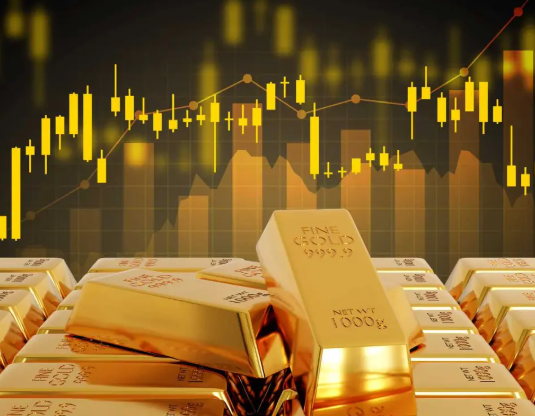The Indian stock market has been on a rollercoaster ride over the past week, showcasing sharp fluctuations that have left many investors feeling uncertain. The Nifty index reached a record high in one session, only to experience a significant decline the next day. This volatility has prompted a notable shift in investor sentiment, with many turning their attention to gold, which has once again reaffirmed its status as a safe-haven asset.
The Surge in Gold Prices
As the stock market wobbled, gold prices surged, reflecting a growing preference for this precious metal among investors seeking stability. Over the past week, the rates for 24-carat gold increased by ₹760 per 10 grams, while 22-carat gold saw a rise of ₹700 per 10 grams. By November 23, the price of 24-carat gold in Delhi reached ₹1,25,990 for 10 grams. In the international market, gold was trading at an impressive $4,061.91 per ounce.
Interestingly, major Indian cities such as Delhi, Mumbai, Chennai, and Kolkata displayed nearly uniform pricing, with 24-carat gold quoted at ₹1,25,840 per 10 grams and 22-carat gold at ₹1,15,350 per 10 grams. This consistency across regions underscores the robust demand for gold as a reliable investment during times of economic uncertainty.
Silver Prices Take a Hit
In stark contrast to gold, silver prices experienced a steep decline during the same week. Silver rates plummeted by nearly ₹5,000 per kilogram, indicating a weak trend in demand. On November 23, silver was priced at ₹1,64,000 per kilogram in domestic markets, while in the global market, silver futures were trading at $49.56 per ounce. This sharp decline highlights a significant difference in investor preference between gold and silver during periods of economic instability.
Futures Market Trends
The futures market on the Multi Commodity Exchange (MCX) mirrored the trends observed in the physical market. Futures contracts for 24-carat gold expiring on December 5, 2025, climbed from ₹1,23,561 per 10 grams on November 14 to ₹1,24,191. Conversely, silver futures saw a considerable downturn, dropping from ₹1,56,018 per kilogram to ₹1,54,151 per kilogram during the same period.
Experts emphasize that both domestic and global factors play crucial roles in determining the prices of gold and silver. With persistent market uncertainty, investors are increasingly viewing gold as a safer investment option compared to other commodities.
Investor Sentiment and Market Dynamics
The recent fluctuations in the Indian stock market have clearly influenced investor sentiment. As equity markets remain unpredictable, the shift towards gold as a secure investment option is not surprising. Historically, gold has been viewed as a hedge against inflation and economic downturns, making it a preferred choice for risk-averse investors.
The current scenario serves as a reminder of the importance of diversification in investment portfolios. While equities can offer high returns, they also come with higher risks, especially in volatile market conditions. Gold, on the other hand, provides a sense of security and stability, which is why many investors are gravitating towards it during uncertain times.
Conclusion
In conclusion, the Indian stock market’s recent volatility has led to a significant uptick in gold prices, reaffirming its status as a safe-haven asset. As investors navigate through these unpredictable market phases, gold continues to shine brightly, while silver struggles to attract the same level of interest. The contrasting trends in these precious metals highlight the dynamic nature of investor behavior and the critical role that market conditions play in shaping investment decisions. As we move forward, it will be interesting to see how these trends evolve and what they mean for the future of both gold and silver in the investment landscape.




